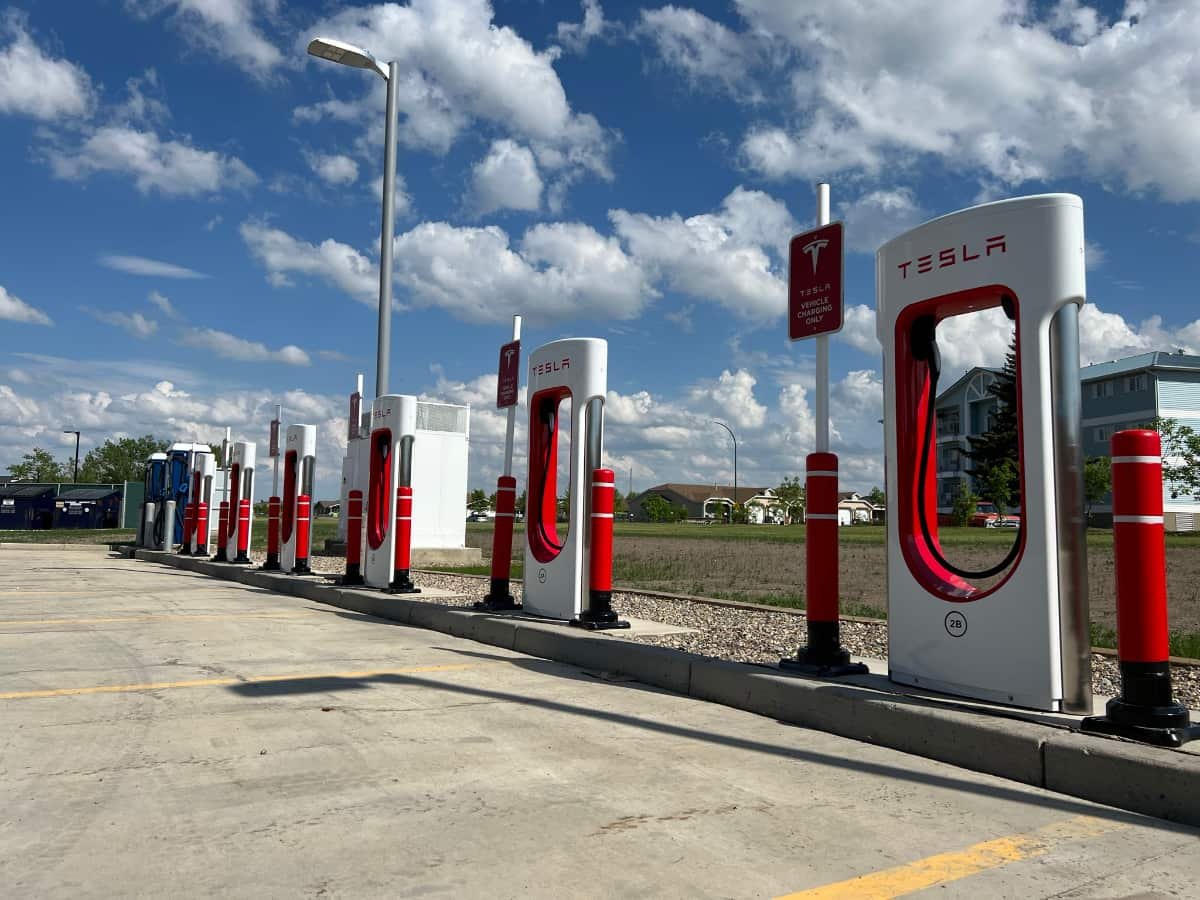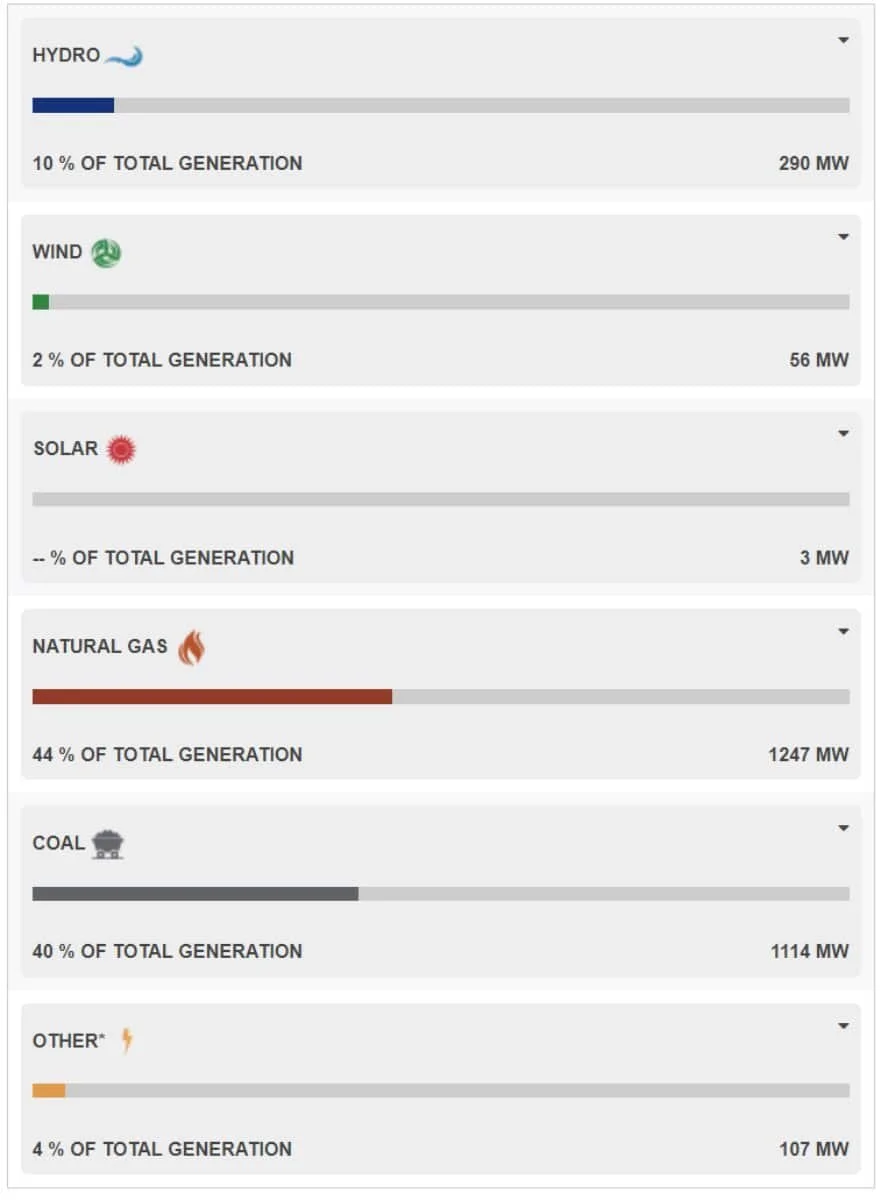Alberta wind power cratered, Sask’s wasn’t great
When Alberta’s wind power cratered, Saskatchewan’s wasn’t great, but at least coal and natural gas provided 84% of all power here
By Brian Zinchuk
One of the arguments made for widespread adoption of wind and solar power generation is the idea of widespread dispersal. The argument goes like this: If the wind isn’t blowing here, it’s got to be blowing somewhere. We just need to have enough transmission lines and interconnects to pull from our neighbours. And if it’s cloudy here, it’s probably not cloudy for our neighbours.”
Estevan Tesla and Flow charging station. Photo by Brian Zinchuk
That’s the argument, anyway. Reality can be a little different.
On Friday, May 26, Alberta’s 3,618 megawatts of wind power generation capacity was producing was less than 100 megawatts for 12 hours, from 9 a.m. to 9 p.m. Much of that time wind power output was less than 20 megawatts, according to the Alberta Electric System Operator, and Twitter bot account @ReliableAB, which logs the AESO’s grid data. At 9:55 a.m., it was as low as 3 megawatts, or less than one tenth of one per cent. That’s only enough to run 12 Tesla Superchargers at full capacity, never mind an entire province.
In the photos below, the total output of wind generation in Alberta could have only powered the 12 superchargers in Estevan and Whitewood, and nothing else, at 9:55 a.m. on Friday, May 26.
SaskPower doesn’t put out nearly as detailed data, and it delays its data by two days, publishing it on its “Where Your Power Comes From” web page. Its numbers are daily averages for entire classes of power generation, as opposed to minute-by-minute information like the AESO publishes.
But the data for May 26 showed that while Alberta’s wind generation was struggling at next to zero, so, too, Saskatchewan’s wind farms also saw dramatically reduced generation.
The 24 hour average was 56 megawatts for wind, out of a total of 617 megawatts of grid scale nameplate wind capacity. As an average, that means there were times when it was lower, and higher, than 56 megawatts. And that average was 9 per cent output of nameplate capacity.
SaskPower almost continuously exports power to Alberta, usually around 150 megawatts, but sometimes as low as 50 and very rarely, zero. Notably, the day Alberta’s wind was struggling and SaskPower’s wasn’t doing that great, SaskPower’s exports averaged 182 megawatts, an extraordinary number not yet seen by Pipeline Online since monitoring began last fall (although some days have been missed).
But at the moment Alberta’s wind was three megawatts, SaskPower’s exports to Alberta were 150 megawatts, according to the AESO. Where those other 32 megawatts ended up, be it Alberta, Montana, North Dakota or Manitoba, is not stated.
Additionally, coal and natural gas in Saskatchewan again made up a total of 84 per cent of power production. This has happened multiple times since SaskPower started publishing this data on Sept. 21, 2022. It’s also substantially more than the 65 per cent of our grid being coal and natural gas, as was cited by SaskPower’s president and CEO Rupen Pandya, in a major announcement regarding power generation on May 16 at the Legislature. Pandya and Premier Scott Moe did acknowledge that our usage can be up to 80 per cent coal and natural gas.
As for solar in Saskatchewan, the 24 hour average output was three megawatts from the installed grid scale base of 30 megawatts. The way SaskPower reports its data, with 24 hour averages, means solar will never come close to showing its full output even if, during the day, it does reach maximum capacity for hours at a time. But as May 26 was less than a month from the summer solstice, the sun rose at the solar facility at Weyburn around 5 a.m. and set around 8:40 p.m, resulting in over 15.5 hours of daylight.


